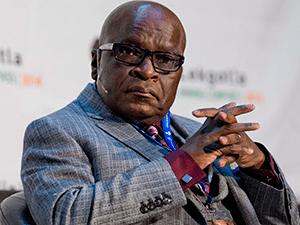
[miningmx.com] – A hastily convened meeting on Thursday of The Mining Industry Growth Development and Employment Task Team (Migdett) exposed more rifts in the industry than it did unity.
The meeting in Pretoria was held to discuss, among other things, the issue of adherence to the mining charter and the way in which the figures are audited.
The results announced by the Department of Mineral Resources (DMR) were generally woeful in terms of targets not met according to the DMR.
In its statement the DMR said that 90% of the companies achieved the 26% target on an employment weighted basis with an average of 32.5% HDSA ownership. But, when the issue of “meaningful economic participation” was taken into account, only 20% of these transactions complied.
In addition, around 45% of mining right holders did not meet the target for improving living conditions of mineworkers and only 36% of right holders met their target on mine community development.
While the target set for employment equity exceeded the 40% target in the different functional categories, “the industry remains dominated by white males”.
But the Chamber of Mines representing the bulk of SA’s mining industry countered furiously in a press release after the event saying the DMR report sought to “cast the industry as not having met its obligations”.
The Chamber said it “is firmly of the view that 100% of Chamber members have achieved the 26% ownership target.”
One of the issues is the critical difference in the interpretation of the ownership element.
After the last Migdett meeting in March a decision was taken for the parties to go to court get a legal declaratory order on the issue. Until that was done the parties agreed not to release the DMR’s ownership data and the Chamber agreed not to release its own data.
The Chamber said “These interpretational differences is the reason why a declaratory order process is necessary (and was agreed between the stakeholders) in order to provide certainty on the matter.”
It said for the government to be “shifting the goalposts mid-stream” and to “incorrectly accuse the industry of non-compliance ” is “damaging to trust and investment in the mining sector.”
Another critical issue on the agenda was the surge of retrenchments and proposed retrenchments in the industry and how best to manage the processes and mitigate the inevitable resulting disaster.
But while the intention was for all the major stakeholders to have their voices heard, the absence of Amcu was a very large elephant in the room.
Asked about Amcu’s no show, Minister of Mineral Resources Ngoako Ramatlhodi said only, “no one is compelled to come … although we would encourage every voice”.
Amcu head Joseph Matunjwa and spokesman Jimmy Gama were unreachable, but it is almost certain the union would not have found much common ground with the rest of the stakeholders.
Amcu’s demand for a R12.500/month basic wage in the gold and coal sectors is unlikely to be conducive to discussions about how best to mitigate retrenchments in the industry.
And, as strike season approaches, the spectre will no doubt be raised of last year’s five-month Amcu-driven strike in the platinum sector.
Speaking to the media after the meeting Ramatlhodi admitted the environment in the local industry was “hostile”.











